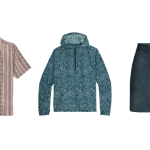The home fitness trend is one of the biggest to emerge from the COVID-19 crisis. In the seven weeks between March 15 and May 2, U.S. home fitness equipment sales grew by 175% in dollars compared to the same period last year. Growth occurred across numerous categories including cardiovascular machines (+225%); yoga equipment (+209%); small strength training products like rubber tubing (+209%); and equipment to aid in mobility, such as inversion tables and Pilates reformers (over 350%).
Clearly the need to create moments for health-at-home was at an all-time high during the opening weeks of the crisis in the U.S., as consumers were forced to find alternatives to closed gyms and fitness studios. It has not only been overall sales, but also average selling prices for the equipment that have increased during this seven-week period, up 27%. The average price for stationary bikes really led this price increase, largely due to improvements in connected technology. Bikes now include technology to measure power output from the rider, allow for connection to online fitness classes, and even provide virtual riding environments.
For manufacturers and retailers that want to take advantage of this trend, a number of obstacles present themselves. Numerous articles point to inventory shortages for both sports equipment and bikes. And as the pandemic (hopefully) subsides and stay-at-home orders are relaxed, gyms will reopen to provide consumers with fitness options outside the home. With these challenges, the question for retailers and manufacturers becomes, how do we maintain the momentum established over these weeks while consumers were inventing at-home exercise routines?
I see three answers.
First is to invest in ways to use digital platforms to create community for those exercising at home. Studio fitness and gyms provide opportunities for social interaction. The camaraderie in gyms, particularly in classes, is an enormous draw for gyms. Retailers and manufacturers have to address this and an obvious direction is using online platforms to connect customers. I have written a bit about this trend in earlier posts. Online platforms like Peloton’s streaming classes or Zwift’s immersive multiplayer gaming environment for runners on treadmills and cyclists on indoor bikes should be emulated. Simple efforts like creating local “leaderboards” that are curated by retailers can also go a long way.
Next is to encourage equipment usage by providing structured training insights and programs. Again, this can be done virtually. While many consumers have now invested in equipment, many are still unsure how to use it effectively to become fitter and healthier. Simple steps on the part of manufacturers and retailers to provide consumers with guided instruction is a powerful answer to consumers quickly abandoning the use of equipment because they don’t know what to do. As an example, I recently purchased a weighted sandbag for workouts. I was surprised when the manufacturer mailed me a postcard, thanking me for my purchase and providing links to YouTube workout videos I should try. While that is a simple step, it can go a long way in sustaining the interest of customers in their recently purchased home fitness equipment.
Finally, we need to be realistic about the challenges of shipping and setting up bulkier fitness equipment in our homes. Cardio equipment represented about 40% of the sales of home fitness equipment over the initial seven weeks of the COVID-19 crisis, so the category stands out as a critical one for continued growth. Looking for ways to extend this growth will somewhat rely on how to ship, support, and setup this equipment for consumers. Looking at recent developments in mobile cycling shops–where bike servicing and delivery occurs out of vans or to online furniture retailers like Wayfair where furniture setup and building can be purchased at a nominal fee–are two business models that may provide inspiration on how to tackle this challenge. A more straightforward approach for the retail community may be to lean in to the sale of smaller items like yoga products and smaller strength equipment, like bands and strap trainers.
Ultimately, today’s crisis has piqued consumer interest on how to be healthy at home. It is now time to take advantage of this change and create a category that has more long-lasting sales improvements.






